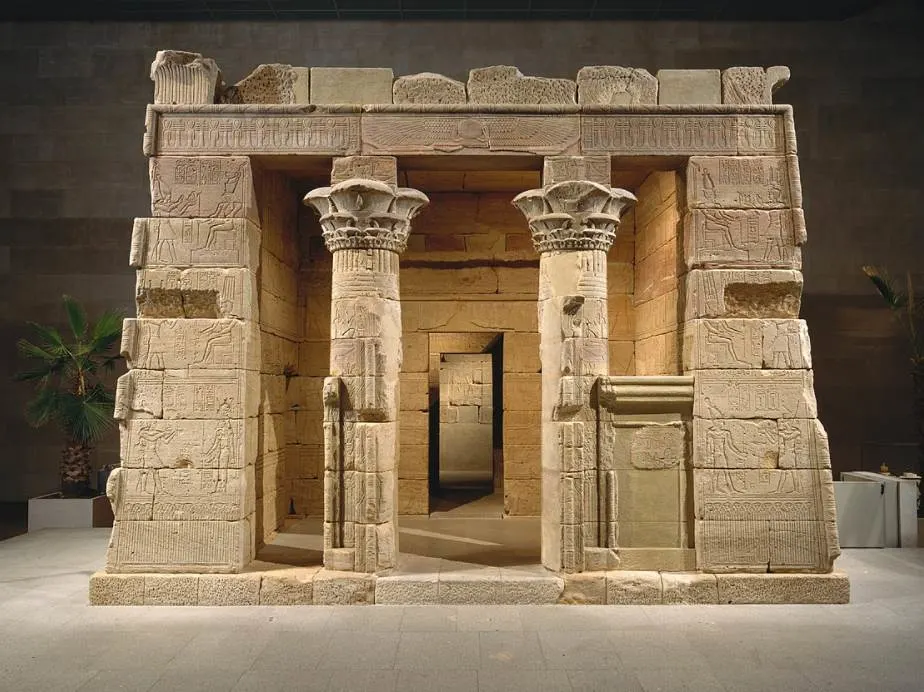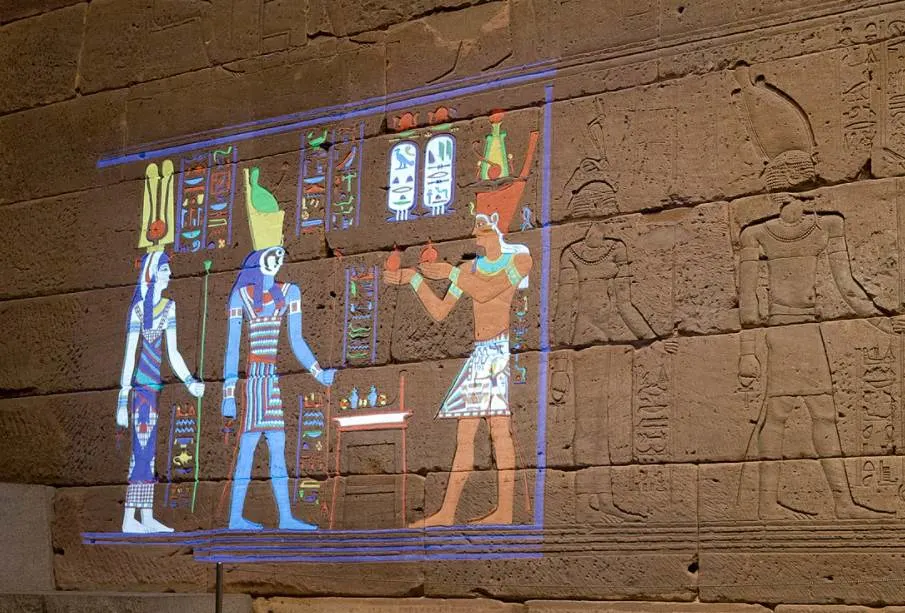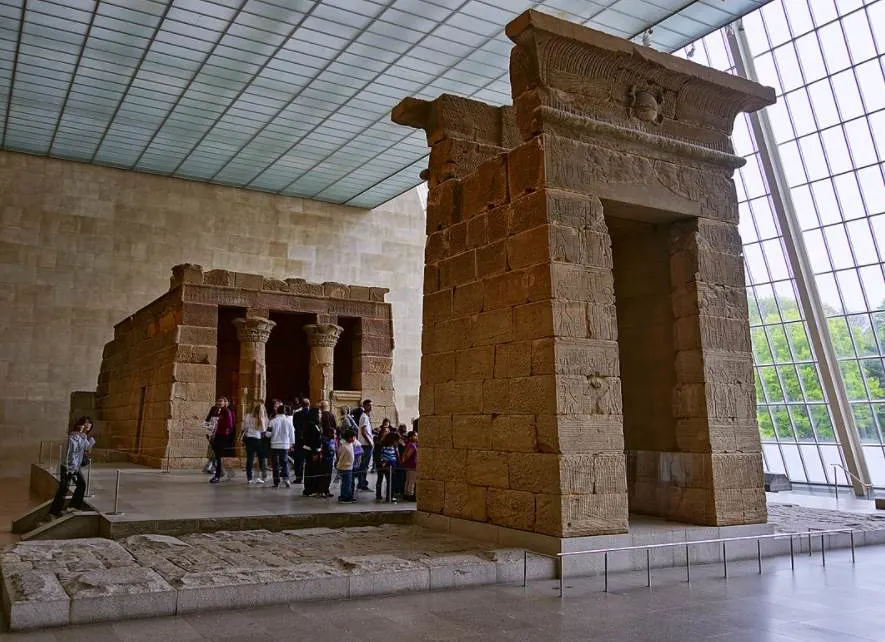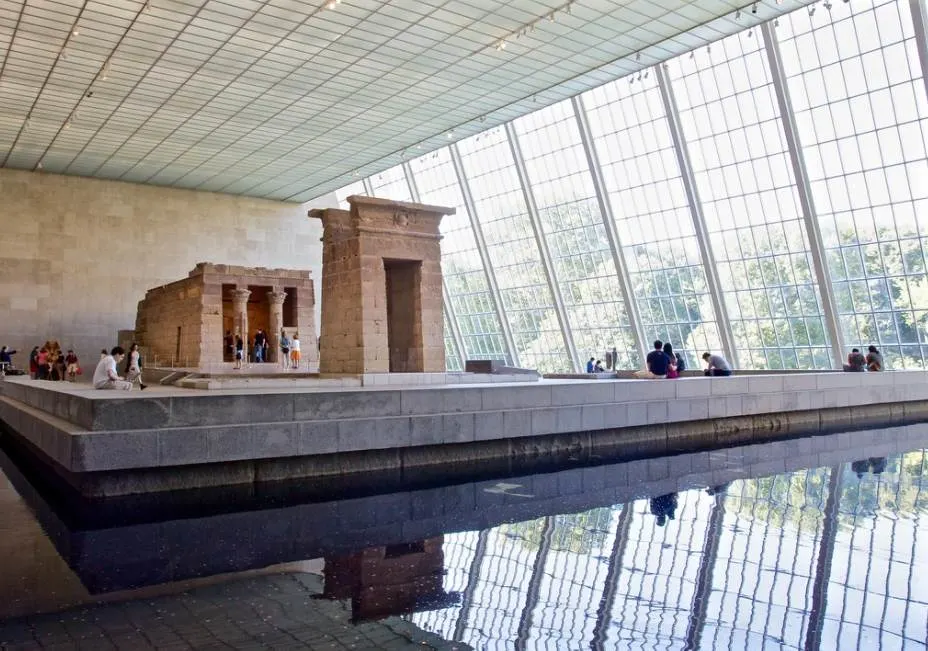Did you know that you can admire an original Ancient Egyptian Temple in one of the most popular museums in the United States?
Let’s take a closer look at some of the most interesting facts about the Temple of Dendur, one of the greatest attractions at the Metropolitan Museum of Art in New York City.
1. The temple was located in a town south of Aswan
The Temple of Dendur is an ancient Egyptian temple that was originally located in the town of Dendur, about 80 kilometers (50 miles) south of Aswan in southern Egypt.
This town was known as “Tuzis” in ancient times and doesn’t exist anymore because it has been completely absorbed by Lake Nasser, the artificial reservoir created following the construction of the Aswan Dam.
Other temples that had to be relocated to avoid being submerged by the lake are the Temple complex of Philae and the Temples of Abu Simbel. Unlike this temple, which was moved to New York City, they were simply relocated to a nearby area.

2. It was commissioned by the first emperor of the Roman Empire
The temple was commissioned by the first emperor of the Roman Empire, Octavian, better known by his name “Caesar Augustus.” He was the nephew of Julius Caesar, the man who laid the foundation for the Roman Empire in the 1st century B.C.
The temple was completed under the supervision of Gaius Petronius, the 4th Prefect of Roman Aegyptus, in the year 15 B.C.
This was one of the multiple Egyptian temples commissioned by Augustus as part of a massive propaganda campaign to strengthen his position as the sole ruler of the Empire.

3. The temple was dedicated to 4 different deities
One of the most remarkable facts about the Temple of Dendur is that it was dedicated to both Isis and Osiris, two major ancient Egyptian deities. While Isis was one of the most important deities back then, Osiris was especially worshipped as the god of fertility and agriculture.

This explains why the temple was located just near the Nile River, the source of irrigation that made agriculture possible in the hot southern part of Egypt.
What’s even more remarkable is that it was also dedicated to two deified sons of a local Nubian chief. These were named Pediese (“he whom Isis has given”) and Pihor (“he who belongs to Horus”).
4. Augustus is depicted several times inside the temple
Just like most famous Ancient Egyptian temples, the walls and columns of the temple on both the inside and outside of the structure were heavily decorated with hieroglyphics and other decorations.
This was part of Augustus’ campaign as he is seen depicted in multiple ways, including as a Pharaoh who is offering gifts to both Osiris and Isis.
He can also be seen praying in the sanctity of the temple and is constantly referred to as both “Caesar” and “Autotrator, a word derived from the Greek word “Autkrator” which means Emperor.

5. It’s a relatively small temple by Ancient Egyptian standards
The Temple of Dendur is far from being the largest temple ever constructed in ancient Egypt, and not as big as the huge pyramids located on the Giza Plateau near Cairo.
The temple has a length of approximately 25 meters (82 feet) and a maximum height of 8 meters (26 feet). The inner sanctuary of the temple is also pretty small with dimensions of 6.55 by 13 meters (21.5 by 42.7 feet).
In front of the temple, there was a large terrace that has a length of 30 meters (98 feet) that originally overlooked the Nile. The small scale on which the temple was built is quickly forgotten when you can admire the elaborately decorated walls and pillars.

6. Graffiti was added to the walls in the 19th century
As the interest in ancient Egypt grew in the 19th century, the temples in southern Egypt were frequently visited by European tourists. Some couldn’t help to put their permanent mark on the walls in the form of 19th-century graffiti.
Some of these vandals were high-level officials, including British Rear Admiral Armar Lowry Corry (1793-1855) who carved “A L Corry RN 1817” into the all. Another distinctive inscription was left behind by Italian Egyptologist Girolamo Segato (1792-1836).

7. The temple was offered to the United States as a gift
The incredible relocation project that included several immense ancient Egyptian temples was conducted by UNESCO in the 1960s.
As a token of appreciation for their help with the relocation of various important monuments, the Egyptian government at the time offered the Temple of Dendur as a gift to the United States government.
The temple was completely dismantled in 1963 and the enormous granite blocks were transported to the U.S. shortly after. These blocks weighed a total of 00 tonnes with the heaviest block weighing 6.5 tonnes, a huge endeavor indeed.
8. It has been one of the main attractions at the MET since 1978
Moving the temple was only half the work. When the 800 tonnes of granite blocks finally arrived in the United States, the problem arose as to where the temple should be erected.
Multiple prestigious institutions were interested in housing this amazing ancient Egyptian temple. The race to get a hold of the temple was even dubbed the “Dendur Derby” by the media, something that emphasizes how eager various institutions were to get a hold of the structure.
When suggestions to erect the temple near the Potomac River in Washington, D.C., or on the Charles River in Boston were shelved, it was eventually awarded to the Metropolitan Museum of Art in New York City in 1967.
Following the completion of the Sackler Wing which features a reflecting pool to resemble the Nile, the Temple of Dendur was finally put on public display in the year 1978
And what an amazing attraction it is, don’t you think?

